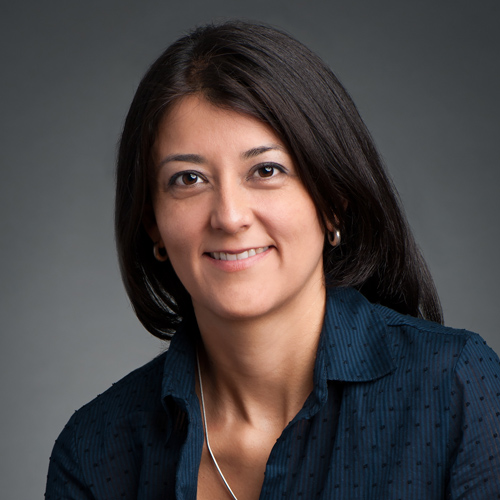In October 2003, the call-center industry faced what was called “D-Day,” when forty-eight million Americans were registered on the then-new national do-not-call registry. “No industry has had to face this kind of instantaneous devastation—and of this magnitude,” the executive director of the American Teleservices Association told The New York Times.
A decade and a half later, the industry of customer-relationship management (CRM)—by way of telephone and on-screen digital communications—is thriving.
“There are so many more ways to interface with consumers today,” says Miguel Ramos, executive vice president and president of performance optimization for C3/CustomerContactChannels, a global provider of contact-center services. “Today, educated consumers have higher expectations for the emerging landscape of customer contact.”
Indeed, most call centers today manage existing consumer questions rather than the outgoing sales “cold calls” of the past. Plus, the nature of retail itself has changed, given that so much has migrated online, necessitating some method of contact to service orders.
Ramos essentially joined the industry his senior year of high school in 1990. He went to college to major in information technology but fell short of earning his degree. He was so busy in the call-center industry—ascending in rank, gaining responsibilities, facilitating the IPO and subsequent sale of his first employer, forming a new company with colleagues, selling that company, then forming C3—that the learning and its rewards were of far greater value than a paper diploma.
But he says classroom study wasn’t for naught. “What I learned in my IT studies was logic,” he says. “You have to know how to take problems and break them up into finite pieces.”
Which is how he advanced from working as an agent on the phones to responsibilities in management, training, information technology, and executive functions. He made great strides with his original employer, PRC (later acquired by IAC, which also owns Ticketmaster and Expedia), achieving the title of senior vice president of strategic planning and international development. “We took PRC public, which was crazy exciting,” he says.
That was over a stretch of fourteen years, but Ramos and his colleagues weren’t done with the industry. They spent the next six years engaged in the turnaround of another call-center firm, Aegis Communications Group, growing the enterprise from $50 million to nearly $1 billion in annual revenue. Ramos’s key responsibilities were in corporate development, including the acquisition of twenty-four companies.
“What I learned in my IT studies was logic. You have to know how to take problems and break them up into finite pieces.”
—Miguel Ramos
In 2010, the group formed C3, based in Plantation, Florida. It had been a con-sulting operation they ran parallel to Aegis, but after the sale of that firm, they transformed the C3 mission. “We decided to turn it into a true operational contact-center company,” Ramos says. “We wanted to focus, as our name says, on all customer-contact channels.”
That was in the mid-2000s, the time when “devastation” was predicted. But Ramos and his partners foresaw customer contact industry changes. And probably because of his background in logic and informational technology—as well as his general interest in learning—they were able to evolve with those changes.
“I earned a number of certifications,” Ramos says. “I’m a Lean Six Sigma Green Belt and have a huge library of books on business and tech. It’s such an evolving industry. There’s no monotony here.”
That’s an understatement. Ramos says a typical day will involve meetings at 9 a.m. with a cable company, at noon with an insurance client, and by 2 p.m. he’s focused on a financial-services program. The company has investors in Singapore, operations in Bulgaria, and Ramos’s phone is never off.
And, C3’s fourteen contact centers are scattered across the globe, nine of them in the United States, defying the popular perception that everything is handled overseas.
“The business develops organically,” Ramos says, meaning that some international expansion has a lot to do with developing markets in those countries. In the Philippines, for example, C3 employs licensed practical nurses for a healthcare client at wages higher than are offered in hospitals. In Bulgaria, it pulls from a multilingual population that is also well educated in technological subjects.
Ramos himself is bilingual in English and Spanish, which is an asset with the company’s Latin American operations (one call center is in Guatemala City). He advises anyone interested in joining this industry to have a second language because the growth in other countries will be significant.
“My own career opportunities were greater because I had two languages,” he says, adding that Spanish-speaking agents can make more money.
Looking ahead, Ramos believes the future will continue to be about emerging technologies and the evolution of customer experience itself. “When I started, there was no mouse for the computer, the screen was green, and it was connected to a mainframe system,” he says. “The phone system arrived on a tractor-trailer, where today it comes in a suitcase. Consumers today are more comfortable using platforms other than voice, such as chat windows. This is all exciting.”
CBRE is the world’s largest commercial real estate services and investment firm, offering a broad range of integrated services to occupiers and investors. CBRE Labor Analytics is an integral component of that service platform, using primary research and scenario modeling to guide location decisions and providing insight into labor-market risks and opportunities that goes beyond traditional demographic and economic analysis. CBRE Labor Analytics has advised Miguel Ramos on C3’s location strategy since 2008.

